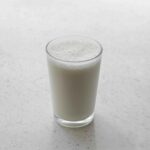Washing your hair might seem like the simplest part of your beauty routine, yet it plays a vital role in maintaining healthy, luscious locks. While most people focus on what products to use, they often overlook how and when to wash their hair. Fortunately, with the right approach, hair washing can become your secret weapon to achieving strong, shiny, and resilient hair. This comprehensive blog will walk you through the best practices for a healthy hair wash, offering science-backed tips, natural remedies, and expert advice.
Why Hair Washing Matters More Than You Think
Before diving into techniques, it’s essential to understand why hair washing is so important. Our scalp naturally produces sebum, an oily substance that keeps hair moisturized. However, environmental pollutants, sweat, and excess oil buildup can lead to clogged follicles, dandruff, and hair fall if not washed properly.
Additionally, clean hair allows nutrients from conditioners, oils, and masks to penetrate better. So, washing your hair the right way doesn’t just clean it—it primes it for nourishment.
1. Choosing the Right Shampoo for Your Hair Type
Not all shampoos are created equal. In fact, using the wrong type can cause more harm than good. Hence, identifying your hair type is crucial.
For Oily Hair
Opt for clarifying shampoos with ingredients like tea tree oil, charcoal, or salicylic acid. These ingredients effectively reduce sebum without stripping the scalp.
For Dry or Damaged Hair
Use hydrating formulas with ingredients such as argan oil, shea butter, or keratin. These nourish the strands and reduce breakage.
For Curly Hair
Curly hair tends to be dry. Therefore, sulfate-free shampoos with moisture-locking elements like coconut milk or aloe vera are ideal.
For Color-Treated Hair
Look for color-protect shampoos that contain antioxidants and UV filters. This not only preserves the shade but also keeps the texture smooth.
2. How Often Should You Wash Your Hair?
Interestingly, the frequency of washing depends largely on lifestyle, hair type, and climate. There is no one-size-fits-all approach, but here are general guidelines:
- Oily Hair: Every 1–2 days
- Normal Hair: Every 2–3 days
- Dry Hair: Every 3–4 days
- Curly/Coily Hair: Once a week or less
However, if you work out frequently or live in a humid area, you might need to adjust this routine.
3. The Step-by-Step Healthy Hair Wash Routine
To ensure optimal hair health, follow this easy yet effective step-by-step process:
Step 1: Detangle First
Before you even wet your hair, detangle it gently using a wide-tooth comb. This minimizes breakage during the wash.
Step 2: Wet Thoroughly with Lukewarm Water
Never use hot water, as it strips the hair of natural oils. Instead, lukewarm water opens the cuticles and preps your hair for cleansing.
Step 3: Use a Nickel-Sized Amount of Shampoo
Apply shampoo to your scalp and roots only. Massage with your fingertips—not nails—in a circular motion to stimulate blood flow and remove buildup.
Step 4: Rinse and Repeat if Necessary
If your hair is especially greasy or has product buildup, do a second wash. But avoid over-washing, which can lead to dryness.
Step 5: Apply Conditioner on Mid-Length to Ends
Never apply conditioner to your scalp. Focus on the ends where hair is driest. Leave it on for 2–3 minutes and rinse with cool water to seal the cuticles.

4. Pro Tips for a Healthier Hair Wash
Even small changes can make a big difference in your hair health. Below are some expert-backed tips:
Use a Microfiber Towel
Regular towels can cause friction and frizz. Microfiber or cotton t-shirts are gentler and reduce hair damage.
Avoid Daily Washing
Although it might seem clean, daily washing strips your scalp’s natural oils. Instead, stick to 2–3 times a week.
Try a Scalp Brush
Using a soft silicone scalp brush can help cleanse more deeply and stimulate hair growth.
Use a Wide-Tooth Comb on Wet Hair
Hair is weakest when wet. Always detangle with care, preferably after applying conditioner.
5. Natural Alternatives for a Healthy Hair Wash
If you’re looking for more natural options, you’ll be pleased to know that many ingredients from your kitchen can work wonders.
Apple Cider Vinegar Rinse
Mix one part vinegar with two parts water and rinse your hair post-shampoo. This helps balance pH and adds shine.
Amla, Reetha, and Shikakai
These traditional Indian herbs are excellent for cleansing hair naturally. Boil them, strain, and use the liquid as a shampoo substitute.
Baking Soda and Water
Once every 2–3 weeks, use this mix to clarify the scalp. However, use sparingly as it can be drying.
6. Post-Wash Care Is Just As Crucial
Washing your hair the right way is half the battle; what comes after is equally important.
Use a Leave-In Conditioner or Serum
This protects the hair from environmental damage and adds shine.
Air-Dry Whenever Possible
Avoid using heat tools regularly. Instead, blot your hair and let it dry naturally.
Avoid Brushing Wet Hair
Always use a detangling spray and wide-tooth comb. Tugging wet hair leads to breakage.
Apply Hair Oil to Damp Hair
Lightweight oils like argan or jojoba oil seal in moisture and reduce frizz.
7. Common Mistakes to Avoid During Hair Wash
Even with the best intentions, some habits can harm your hair:
- Using hot water
- Scrubbing with fingernails
- Applying shampoo to ends
- Skipping conditioner
- Washing too frequently
- Using too much product
Avoiding these mistakes can drastically improve your hair’s health and appearance over time.
8. DIY Hair Rinse Recipes for Extra Shine and Health
If you love DIY care, these hair rinses are must-try:
Green Tea Rinse
Steep green tea, let it cool, and pour it over your scalp after shampooing. It helps reduce dandruff and adds shine.
Rice Water Rinse
Soak rice in water for 24 hours, then strain. Use the water post-conditioning. It strengthens and thickens hair over time.
Coconut Milk and Aloe Rinse
Mix equal parts and use as a final rinse. This deeply moisturizes and adds natural softness.

9. Expert Advice: Dermatologist-Approved Tips
Dermatologists recommend focusing on scalp health first. A healthy scalp equals healthy hair. Using gentle products and avoiding harsh chemicals ensures long-term results. Regular trims and avoiding tight hairstyles also reduce breakage and thinning.
10. Hair Wash Routine by Season
Interestingly, seasonal changes affect your hair health:
Summer
- Sweat and sun exposure increase.
- Wash more frequently but use hydrating products.
Winter
- Hair becomes drier.
- Use heavier conditioners and avoid daily washes.
Monsoon
- Humidity leads to frizz.
- Use anti-frizz shampoos and avoid tying wet hair.
Frequently Asked Questions (FAQs)
Q1. Is it okay to wash hair at night?
Yes, but ensure hair is completely dry before sleeping to avoid fungal infections.
Q2. Can I skip conditioner if I use hair oil?
No. Conditioner and oil serve different purposes. Conditioner hydrates instantly while oil nourishes over time.
Q3. Is dry shampoo a good substitute?
It can help between washes but doesn’t replace real cleansing. Use sparingly.
Q4. How can I prevent hair fall during wash?
Be gentle, avoid hot water, and use strengthening shampoos with biotin and keratin.
Q5. Can over-washing cause dandruff?
Yes. Over-washing strips natural oils and irritates the scalp, leading to flakiness.
Conclusion: Make Hair Wash a Wellness Ritual
To sum it up, a healthy hair wash is more than just shampooing and rinsing. It’s a self-care ritual that, when done right, enhances not just your hair’s appearance but also its strength and longevity. By understanding your hair type, choosing the right products, avoiding harsh habits, and incorporating natural remedies, you can transform your hair care game completely.
So next time you step into the shower, remember—it’s not just a wash, it’s nourishment in motion.




Leave a Reply